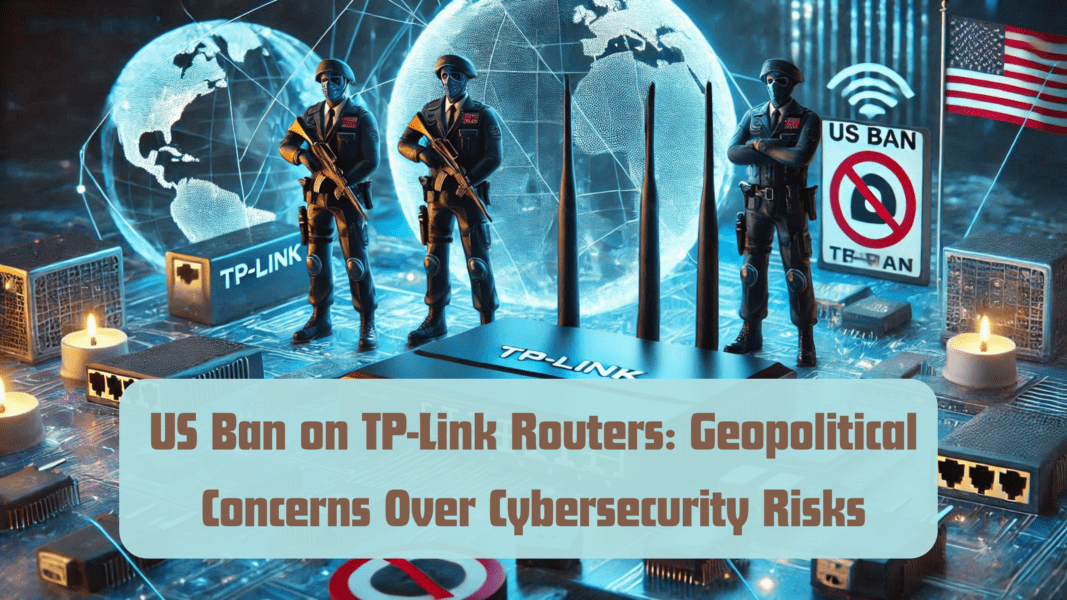The Geopolitical Debate: A US Ban on TP-Link Routers
In recent discussions, US lawmakers have proposed banning TP-Link routers, a popular choice among consumers and small businesses. With approximately two-thirds of the US market share, TP-Link’s dominance raises questions about potential cybersecurity risks and geopolitical implications. However, the driving force behind this proposal appears to be less about documented cybersecurity risks and more about mitigating unknown threats and addressing the geopolitical relationship between the US and China.

Understanding the Threat Landscape
Limited Known Vulnerabilities
Contrary to what one might expect, TP-Link does not rank high on the list of networking vendors with exploited vulnerabilities. According to the Cybersecurity and Infrastructure Security Agency (CISA), TP-Link has just two known exploited vulnerabilities. This figure pales compared to competitors like Cisco Systems, which has 74, and Ivanti with 23.
- Example Exploits:
- CVE-2023-1389: A command injection vulnerability in the TP-Link Archer AX21 router.
- Modified firmware with implants like “Camaro Dragon,” discovered by Check Point Research, targeting TP-Link devices.
While these vulnerabilities pose real risks, they are not unique to TP-Link or Chinese manufacturers. Instead, they reflect broader challenges in securing embedded devices globally.
Also Read: Top 10 Cybersecurity Fundamentals: Building a Strong Digital Fortress
The Geopolitical Underpinnings of the Ban
Economic and Strategic Concerns
The proposal to ban TP-Link routers stems from concerns about the Chinese government’s influence on its domestic companies.
- Government Oversight:
Chinese officials maintain significant control over businesses, including cybersecurity firms. This control raises questions about the extent of potential backdoors or unauthorized data sharing in TP-Link products. - Similar Precedents:
The US has previously banned other foreign tech products, such as Russia-based Kaspersky antivirus software, citing national security risks.
The Role of National Security
Thomas Pace, CEO of NetRise and a former cybersecurity head at the US Department of Energy, highlights the broader economic and strategic rationale behind such bans.
- Perspective:
“The value of the ban lies in economic policy rather than just technical cybersecurity. It’s about reducing dependence on rivals.”
Also Read: AI-Powered Investment Scams on Social Media: New Threats in 2024
TP-Link’s Response and Mitigation Measures
TP-Link emphasizes its commitment to meeting global security standards. In a statement to Dark Reading, the company noted:
- Security Practices:
“Many brands are targeted by hackers. We welcome government engagement to demonstrate our commitment to American security.” - Firmware Concerns:
TP-Link products targeted by implants typically involve modified firmware, not the original software, suggesting third-party tampering rather than inherent vulnerabilities.
Also Read: TikTok Ban Sparks Furious Online Reactions Across the Internet
The Bigger Picture: Cybersecurity and Embedded Devices
Common Vulnerabilities in IoT
Experts point out that vulnerabilities in IoT devices are a global issue, not limited to Chinese manufacturers.
- Key Challenges:
- Unpatched firmware.
- Weak default passwords.
- Improper configurations.
Mitigation Strategies
- Consumer Practices: Regularly update firmware and use strong passwords.
- Business Measures: Employ third-party management solutions to monitor device security.
- Government Oversight: Apply uniform security standards across all manufacturers, regardless of origin.
Also Read: Optum AI Chatbot Security Flaw Raises Major Concerns
Broader Implications for the Networking Market
Competitive Landscape
The ban could disrupt the market, opening opportunities for other vendors like Cisco and Netgear. It may also prompt businesses to diversify their supply chains to mitigate reliance on any single country.
Trust and Transparency
The issue underscores the importance of trust in the technology supply chain. Both consumers and businesses need greater transparency about device security and potential government influence.
Also Read: Phishing Attacks Are Evolving: Is Your Mobile Phone Safe?
FAQs
- Why is the US considering a ban on TP-Link routers?
Concerns center on potential influence from the Chinese government and unknown cybersecurity risks. - Are TP-Link routers more vulnerable than others?
No, TP-Link has fewer known vulnerabilities compared to other manufacturers like Cisco. - What specific vulnerabilities have been identified in TP-Link routers?
Examples include CVE-2023-1389 and modified firmware implants like Camaro Dragon. - Does the Chinese government control TP-Link?
While direct control is unclear, China’s government has significant influence over domestic businesses. - How can consumers secure their TP-Link devices?
Regularly update firmware, use strong passwords, and follow best practices for IoT security. - Are other countries banning TP-Link products?
The focus currently lies in the US, but similar concerns may arise elsewhere. - What alternatives exist to TP-Link routers?
Competitors like Cisco, Netgear, and Ubiquiti offer secure networking solutions. - Is this ban purely about cybersecurity?
No, it also reflects economic and geopolitical strategies. - What should businesses consider when choosing networking devices?
Evaluate the manufacturer’s security practices and potential government ties. - How does this impact the broader networking market?
A ban could shift market dynamics, encouraging diversification and innovation.

